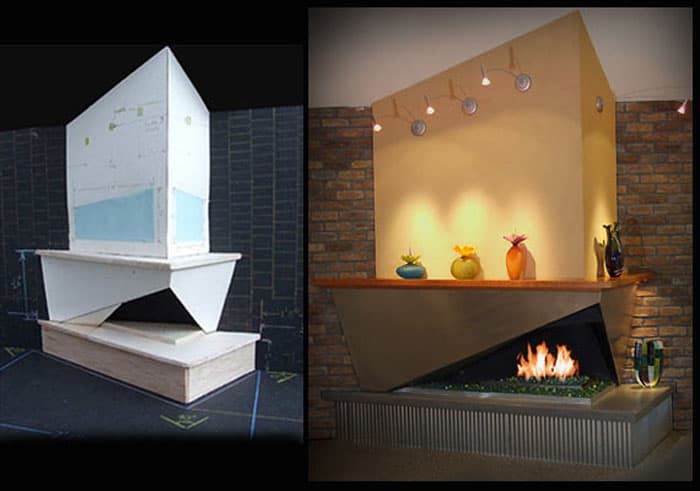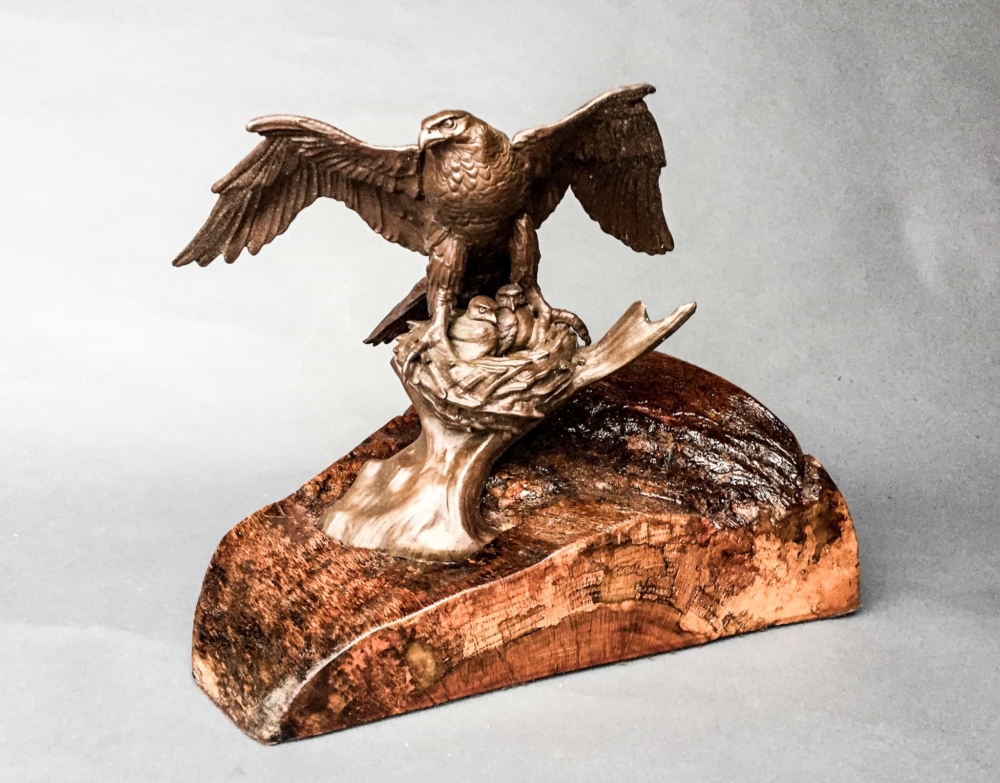Commissioned Art Transforms Your Luxury House into a Home
Imagine descending into a cave, crawling along a narrow passageway, and emerging into a large room where your headlamp illuminates a large painting of mammoths chased by a spear wielding hunter. Figures in yellow, red, black, and brown stretch the entire length of one wall. Taking in this art, you learn something about the people who once lived here, like what was important to them, their style, even their preferred color palette!
After an exhausting day, you return home and gaze at a reproduction of a landscape painting that you purchased at a home goods store six summers ago. What does this living room print say about you? If it is rediscovered in 10,000 years, will it reveal anything about your life, your loves, your aspirations?
Wouldn't it be better if you selected something more you? Perhaps a one-of-a-kind piece that expresses your personality in a way no retail reproduction ever could? White Diamond interviewed two of North Central West Virginia's top artists to find out what they recommend when it comes to commissioning custom artwork. With their help, we've compiled a brief guide to purchasing custom art.
To see why these two are in high demand, visit the online galleries of Jamie Lester and Christian Deleon.
1. Think beyond the canvas
Most people think of paintings when commissioning an artwork, but many other options exist. For example, Jamie Lester carves sculptures for indoor or outdoor display, while Christian DeLeon works in embossed leather, wood, steel, and other materials to create custom designs.
DeLeon emphasizes the vision of his clients, saying, "Custom artwork is the best way to make a space truly your own."
Last year, for example, he modified a wooden table by designing and installing a leather table-top accented with dyes and metallic pigments to create a steam-punk inspired poker table that suited his client like a royal flush. He also brings an eye for sleek, modern design to his work and has an impressive portfolio of helping homeowners beautify living spaces. Among his commissions, DeLeon has upgraded fireplaces, designed lighting schemes, and carved sustainable sculptures into living trees.
Sculptor and painter Jamie Lester, who is currently working on several commissions, emphasized buying local and mentioned that Appalachian art is hot right now. In his view, fine art is not just beautifying, it's a smart investment. His view is shared by some of the world's top investors. Forbes reports that fine art investments are an effective hedge against inflation, adding, "There has never been a better time to invest in art, and the interest in art as a viable asset is only set to grow in 2022."
2. Confirm that the artist has available time.
Both the artists we interviewed said they welcome queries about commissioned work and would do everything they can to work with a new client, so long as their schedule allows. Still, just like other home improvements, clients should be prepared to schedule in advance.
Jamie Lester shared that he balances taking on new clients with his existing commissions, which are numerous. His workshop in Morgantown is humming with activity and he also founded Love Hope Center for the Arts in Fayetteville, WV in 2021. The Center doesn't just host art shows and related events, it provides selected art to one of the top hotels in the state. As for art in homes, Lester revealed that the first thing he did when he moved into his current home was hang art on the walls, much of it by other artists.
"Without art," Lester explained, "a house is not a home, but when you do hang great art, it brings a little bit of joy every time you see it."
3. Define details in the initial meeting.
Most artists have their own website, which makes initial contact easy. However, you should plan some details before you make contact.
For example, when basing the art off an existing object, provide reference materials (such as high-quality photos) to help communicate your vision. The artist needs to know what materials will be required for your commission and this will impact pricing. Be sure to ask about the price and timeline upfront — and allow the artist time to get back to you with their estimate. If the piece is a design element for your home, consider having them visit, so the artist understands how this piece fits with your aesthetic.
4. Use a contract.
Both you and the artist have expectations about how a commission works. A formal contract makes these expectations clear. It should define the subject and medium. It should also include the full price with all expenses and payment terms defined. Due to the cost of materials and tools, many artists will ask for 50% of the final costs up front. This is standard practice.
Include a timeline indicating when each step of the work will be completed. For example, if the artist is creating sketches, the timeline lets you know when you can review them. The timeline should also define the approval process and the proposed date of completion, including installation. Allow time for revisions during the approval process. The contract should also include what the artist retains.
Don't know where to start? Think & Wonder has created a commissioned art contract template for anyone to use.
5. Stay in touch.
Check in with the artist per the contract schedule to observe progress. This helps ensure that the artist has everything required and can revise as needed, before changes become overly expensive, time consuming, or prohibitive.
Don't be shy about asking for photos or even in person visits. However, remember that professional artists have tight schedules, so rather than dropping in unannounced, make an appointment! In the end, if you communicate your vision to a talented artist, you'll love the result and perhaps even leave hints for future generations about what it was that inspired you!










